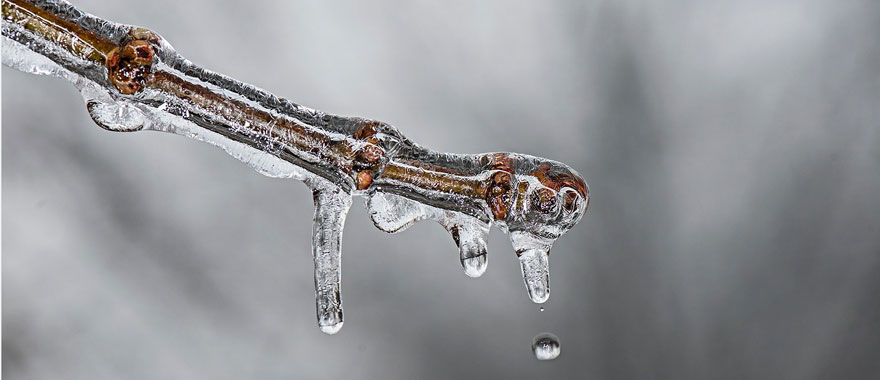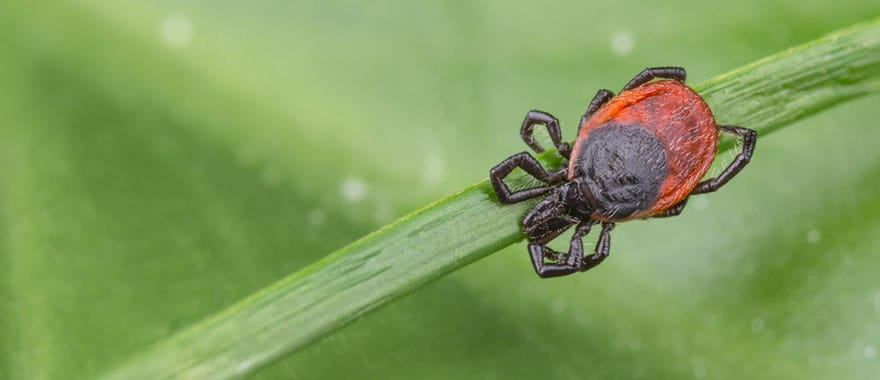
Some years we get so much snow and wind in February that it’s hard to believe spring officially starts in just a month. Other years, it feels like spring has already arrived!
Either way, it’ll soon be time to get busy checking trees for any damage caused over the winter, fertilizing your trees and shrubs, and taking steps to protect them from disease and pests.
But in the meantime, below are some things you can be doing in the yard, as well as important tree care issues to take care of before spring arrives in full force.
You’ll also find answers to some of the questions that we often get at this time of year.
Get Ready For Spring – It’s Coming!
- Check all of your trees for potentially unsafe branches or tree trunks – If anything looks unsafe (see our article on Identifying Hazardous Trees), give us a call.
- Inspect hardware in trees – If your trees have cables and braces in them, the hardware should be inspected every few years to be sure it’s intact, in good condition and that nothing needs to be adjusted or replaced due to the tree’s growth. Winter is a good time for that inspection and you still have time before things start growing.
- Prune promptly – Any tree and shrub limbs damaged by ice or snow should be pruned off promptly to prevent bark from tearing. Any dead, damaged or diseased branches should ideally be removed before they start to bud out.
- Start planning for spring – Make sure you have a program in place to deal with common tree pests and diseases – you’ll want to get some of those treatments done as soon as weather warms up so get it on the schedule now.
- In case of a thaw – Don’t be fooled by warming weather – it’s still winter! Hold off digging in the yard until spring is really here – digging in wet soil will destroy soil texture and harm your plants. On the other hand, a warm spell is the perfect time to apply an antidesiccant to newly planted narrow-leaved or broad-leaved evergreens. Don’t spray an antidesiccant during freezing temperatures.
- Avoid walking or driving on frozen lawns – This this can injure turf grasses. Once the crown is damaged, the grass is unlikely to grow back when spring finally arrives.
- Don’t remove ice – In case of an ice storm, allow ice to melt off your plants naturally. Attempting to remove ice can damage the plants.
- Gently brush off heavy snows from tree and shrub branches. Don’t shake the branches or hit them with a broom or shovel as they could break.
- Check all smaller trees for evidence of rodent injury to the bark – Be sure to pull away any snow around the tree as rodents will burrow under the snow to get at the tender bark on young trees. Use baits or traps where necessary, and wrap the bottom of susceptible trees with tree wrap (be sure to remove it when the snow melts for good). Learn more about how to prevent winter rodent damage.
- On icy paths and driveways – Scatter sand, bird seed, sawdust, cat litter or vermiculite to avoid slipping. Avoid salt or ice melters as these may injure plants.
- Check for frost heaving on perennials – If you can, push them back into the ground and cover them with extra mulch as necessary.
- Secure fencing and protective wrap – Make sure that any fencing or protective wrap around plants is secure. You don’t want it flying away in the next wind storm!
- Check for insect pests – You’ll also want to check the bark and branches of ornamental trees and shrubs for scale insects and the egg masses of gypsy moth, tent caterpillar, and other harmful pests. Remove or destroy these egg masses (prune or scratch off with your fingernail) to eliminate hundreds of these plant eating pests before they hatch. Many of these eggs will be found high up in trees. Please don’t climb up yourself! Let us take a look (we’re experienced professionals who use the right safety gear to keep everyone safe) and, if needed, we can apply the proper treatments at the same time (like horticultural oil to control scale); it’s much easier when there aren’t any leaves on the trees.
Late Winter Tree Care Q&A
Big snow banks built up over the winter. Will they damage my trees and shrubs?
Yes, they probably will. Here’s what you can do about it.
How do trees protect themselves from crazy temperature swings in late winter?
Learn why trees don’t turn into icicles.
Why do trees make cracking sounds in late winter?
What’s all that racket? Is it dangerous? Find out here.
What kinds of tree work can be done in late winter? Do I have to wait until spring?
You may be surprised to know that most tree service activities can be done during the winter. Some things, like tree removals, are ideal for winter. Others, like dormant pruning, can (or should) only be done during winter. We’re often able to do the work more efficiently when the ground is frozen – meaning lower costs for you!
I hear late winter is a good time to prune fruit trees. Really??
Pruning while trees are dormant (before temperatures warm up and buds start to form) is the best time for major pruning on most trees. But it’s doubly important for all of major fruit trees grown here in CT, like apples, pears, peaches and plums. Learn more about it here.
What kind of insurance should tree care companies have?
Here’s an article I wrote describing what you need to know about tree care company insurance. If you’re ready to have some tree work done, this article is a must-read. Protect yourself and your property by ensuring that your tree care contractor has the right insurance coverage.



